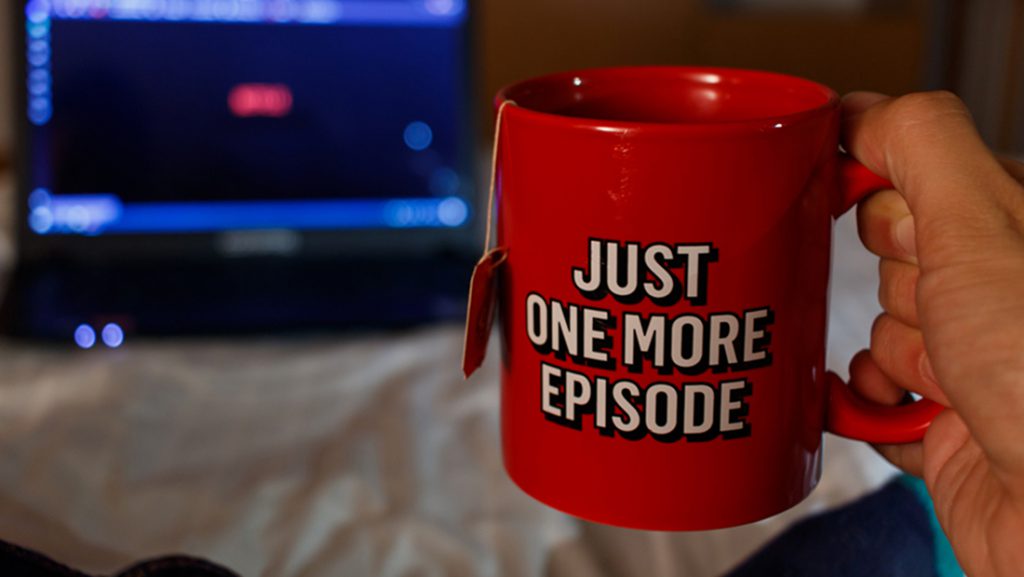Time To Dump The Phrase “Netflix Of Learning”
“The world has nearly ended. The only two humans left are battling huge waves at a place that was once a desert. Their only hope is to configure and activate a device that will beam an SOS to the nearest inhabited asteroid. Tom, the older of the two, has been through many catastrophes and survived, but now he is done. He knows he has only moments left. He turns to Chad to go ahead and fire up the device and asks, ‘You know how to set it up, right?’ ‘Of course,’ Chad replies, ‘I have seen the video.'”
That bit of script is unlikely to make it to Netflix. If it does, I will certainly watch it, at least until some other movie distracts me and I browse away. I may not wait to see the end, but I will always wonder; if Chad had bothered to learn hands-on and practiced enough like old Tom, could he have saved the world? Confession: I am a great fan of Netflix. I just don’t fancy it as a model for workplace learning.
Netflix: Great For Entertainment, Not For Education
Jared Cooney Horvath, cognitive neuroscientist, and author of Stop Talking, Start Influencing: 12 Ideas from Brain Science to Make Your Message Stick, agrees. He is focused on college education, but his observations are equally relevant for workplace learning. Talking about binge-watching, he writes, “research has revealed that when you cram an entire season of a television show into a single sitting, you will forget about 80% of everything you watched within 72 hours.” While students might pass their courses, “it all but guarantees they won’t retain what they’ve learned for longer than a week. In a very real sense, the Netflix model in education allows people to earn degrees without the ability to recall fundamental facts and concepts.” Are you listening, Chad?
Horvath observes that jumping back and forth among tasks is what passes for multitasking. “Online learning platforms actively encourage multitasking by including live chat, message boards, and linked content, and by allowing multiple internet tabs to be open simultaneously.” Learners might hone their social (media) skills, but “at the expense of a deep comprehension of why each activity matters.”
Then there is the malady that I suffer from when I am staring at Netflix: choice paralysis. It “leads people to place more emphasis on the act of choosing than on the final choice itself.” Horvath recommends the first lesson for new learners should be “how to learn.” Leaving students to weed through academic offerings with no clear sense of direction or progression is probably not the best strategy in education. In fact, this practice does little to ensure that graduates will complete, understand, or even seek out core curricula relevant to specific fields. That holds true for workplace learners, too. Only when learners truly understand how “information is embedded, understood, and applied can they be expected to succeed in a largely self-directed digital landscape.”
Passive Watching Versus Active Practice
As I understand it, if the objective is to force or entice learners to gorge on Netflix-like content from their LMS, that is not learning. The key missing element is practice—the actual doing, which is the only way to build the ability to act correctly at the right time in the real world. We need to think about the proficiency levels we expect from learners and develop the learning accordingly. Yes, it might include some videos by design but cannot be made up of only of one or more videos. During a recent discussion on the subject, Heika Bauer saw a role for the Netflix approach, if easily accessible and digestible content could help ignite that spark, trigger an individual’s wish to learn, remind them of forgotten skills, and motivate them to engage in practical activities [1].
Eran Adi Cioban did not want to place his learners in front of a huge collection of learning possibilities so that they were dependent on an algorithm to make a selection [2]. Instead, he wanted them “to be active and inquiring when they choose what they should learn.” He pointed out that several organizations “fall into the illusion that breaking content into smaller pieces and posting it on an LXP is learning. Little do they know that a wall is a wall regardless of the number of bricks in it. We don’t want to build walls but rather to break them and use the bricks for other, more useful, causes.”
Martin Brooks observed that knowledge does not translate into value unless there is high-quality application, which only comes from practice [3]. He quoted Bruce Lee to drive home the point: “I fear not the man who knows 10,000 kicks and has practiced them all once, but I do fear the man who knows one kick and has practiced it 10,000 times.”
Mitchel MacNair went nuclear in his argument [4]. “Coming from a background of training sailors to safely operate nuclear power plants in ships and submarines in the US Navy, I can tell you that the most efficient methodology I’ve ever seen for developing expertise starts with some basic knowledge but quickly progresses to supervised practice—and lots of it. We could take an 18-year-old fresh out of high school and teach them to safely operate a nuclear power plant within a year. It is a thoroughly tested and proven methodology that takes someone from a new hire to an independent individual contributor in the shortest amount of time possible—real bottom-line results for any organization.” MacNair believes in practice. “You can’t microwave the building of expertise by watching lots of videos, but you can certainly accelerate it with supervised practice. You have heard ‘practice makes perfect,’ but the more correct phrase is ‘practice makes permanent.’ Supervised practice is critical in situations where you need people to consistently perform tasks in a certain way.”
The War For Attention
We Are Teachers lists 60 of the best educational shows on Netflix. It is a wonderful list, and I wish I had had the opportunity to see some of those shows when I was in school! Yet, these are not substitutes for the regular curriculum, including lab work and sports practice.
Wade a little deeper, and you will come across tantalizing listicles like “7 movies on Netflix all entrepreneurs should watch,” “5 best Netflix movies for business startups,” and “Build a better business: Watch these 6 Netflix movies.” I have no dispute with the selections (already added some to my watchlist!), but I am yet to come across an entrepreneur who became successful, a startup that took off well, or a business that got better thanks to Netflix, or more precisely, a handful of movies on the platform.
Nick Hernandez, CEO of 360Learning explains why the Netflix approach remains a recurring dream [5]. “The world is changing quickly, and companies need to adapt their operations to keep up. The constant flux results in a heavy burden on learning teams, who need to make sure each employee receives the most relevant training at the right time. An engaging learning channel that gets employees ‘addicted to learning’ seems like a quick fix.” He hastens to add that it is a false promise because most learning platforms can’t replicate Netflix’s activation and retention strategies.
With most employees at home and free to consume any kind of data on demand, it boils down to a war for attention. The learning manager might want to crack the whip and impose a completion date, but the learners decide what is worthy of their time and attention. The bosses may set goals, but performance is left to the will of the learners. In the absence of an engaging, productive, in-person mix of practice and evaluation, learning teams are “wildly unprepared to wage this battle in the war for employees’ attention.” Also, to activate consumers, “you need to give them a powerful reason to start engaging.” Learning budgets cannot begin to match the star value and production prowess of Netflix.
Too Many Options Drown The Learning Goal
Steve Goldberg is convinced that workplace learning does not need Netflix. “The application of what you learn in a Netflix context is essentially random. It’s stored in the back of your head and if it ever becomes relevant, it becomes relevant. Corporate learners usually have a specific goal of ‘I want to learn how to do x to achieve y,’ it’s not something they want to keep in the back of their head.” While Goldberg rightly supports the need to make learning “engaging and enjoyable,” that should be just one aspect of the enterprise’s learning strategy. But the main pillar should still be “the practical application of learning for the purpose of enhancing your skill repertoire, progressing your career and creating new sources of value for your employer.” While the Netflix algorithm may try to assess your taste and offer selections, it must also offer ample options to keep you hooked. On the other hand, the needs of enterprise learners are usually better defined. “Drowning them in options isn’t best practice when there are just one or two options that solve their problem and let them get back to work,” Goldberg points out.
I am among those who open Netflix, click endlessly, and then shut it down without really having watched anything. A recent blog by Seth Godin suggests that I should instead go for a walk [6]. “Wandering around in a digital swamp is a pretty common way to spend an hour these days. Alas, most of us would never consider doing this in a forest. Walking over to a tree because it looked sort of interesting, standing there for a minute, then wandering away. Tree after tree, for hours. The thing is, digital wandering is mostly a waste. It doesn’t free our imagination; it stifles it. It’s as if this digital version of a tree has made us stressed out as a goal….the next time we consider wasting an afternoon clicking on whatever baits us, perhaps it might make sense going for a walk instead.” By chasing the Netflix illusion, are we missing the learning tree for the streaming woods?
This article was first published on eLearning Industry:
elearningindustry.com/its-fun-but-is-netflix-right-for-workplace-learning



















